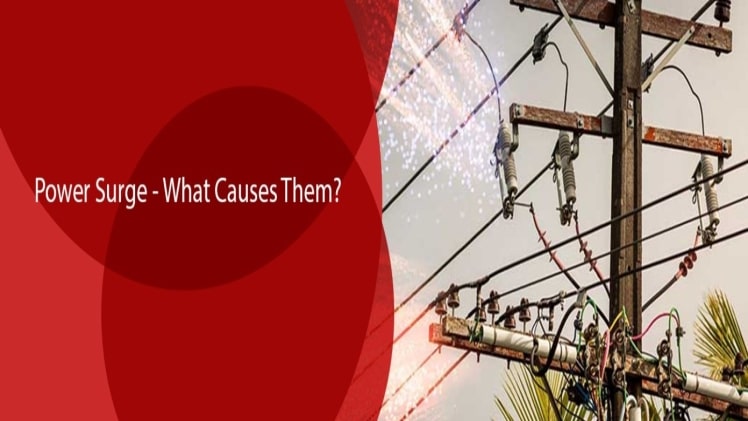Our dependency on electricity increase by the day. Considering how each room in a home, every workplace, and even some public places use electricity for the smallest of tasks, it’s no surprise that things can go wrong occasionally. A wide range of malfunctions can easily occur, resulting in unforeseen electrical disasters. One of the most common electrical disasters that could take place in such situations is a power surge.
The usefulness of most of your gadgets depends on how well your home’s electrical system functions. This is one of the most important yet sensitive systems in your home, a utility without which your productivity could take a serious hit.
Fortunately, there are tools such as the Surge Assist 6000 Max that can be used to make the consequences of a surge less drastic. To avoid any issues that may later cost you a fortune to fix, you must take certain precautions to ensure the safety of your home. There are many root causes of electrical surges in a home, and the following are some ways through which you may protect your home against them.
Overloading Extensions/Outlets
Plugging in an excessive number of appliances into a single outlet is a risky practice. Each of your devices requires a specific amount of power from an outlet to operate. There is an overload point for each outlet, and going over it might result in terrible accidents. This type of power surge can easily result in a fire if ignored, making it one of its most dangerous after effects.
The frequency with which the electricity is drawn affects how much harm is done as well. Accidents may arise if the outlet is overloaded over an extensive period, which is quite likely since many appliances are used in homes this way. If the appliances are plugged in for a shorter period, the risk of this happening is slightly diminished, but it’s still not a guarantee.
Blackout
Power grid failures are more common than you may think. Often caused by a storm, this malfunction experienced by your electricity provider can result in a prolonged blackout. Even though homeowners are often notified of this in advance, the appropriate precautions aren’t always taken. After this blackout, the sudden return of the electrical flow can result in a jump in the current.
A huge voltage spike occurs due to this which can easily harm any of your connected appliances at the time. Fortunately, your appliances can be safe as long as they aren’t connected. Keeping an eye on updates can help prepare you for this disaster in advance as well.
Weather Conditions – Thunderstorm
Harsh weather is often the cause of the most intense power surges. This source of a power surge can also be considered fairly unpredictable. Unless you’re willing to cut off your connection to electricity entirely, it can become very difficult to avoid damage from this type of surge.
As soon as they occur near a power source, lightning strikes cause a huge amount of current to flow towards your home. This current quickly enters your house through the electrical system and can result in you losing some of your major, most expensive appliances.
A lightning strike is one of the deadliest sources of a surge. It must be prevented from affecting your home at all costs due to its magnitude. A good way to protect your home in this case is by getting whole-home surge protection.
Faulty Wiring
Bad wiring in your home is one of the more common power surge sources. There can be many reasons for improper wiring in your home; the system can be decades old, or an animal could’ve chewed through the insulation and exposed the wires inside. Either way, the consequences can easily become fatal.
Faulty wiring is difficult to detect since it’s often inside walls. The best way to locate this type of damage is through regular inspections of the system and learning to recognize signs. Indicators of bad wiring include buzzing sounds coming from outlets, flickering lights, and tripping circuit breakers. If you notice these signs, it may be a good idea to contact a professional immediately.
Here’s What You Can do
Avoiding surge damage isn’t as difficult as you may think. While multiple sources are threatening your home, taking a few basic steps can help make your home much safer. Here are some of the best measures you can take in this regard.
- To avoid overloading outlets, you should try to only connect those appliances that you’re actively using. Disconnecting a few of your smaller appliances will keep excess power from being drawn.
- It’s always a good idea to regularly inspect your home for damages. Faults in your home’s system should be repaired before they cause any harm.
- A surge protector is an elegant solution to power surge damage. It is a compact and affordable device that grounds the excess current before it enters your home.
- Disconnect major appliances if you sense a surge approaching to avoid repair costs.
Final Thoughts
As is clear by now, an electrical surge is a sudden voltage spike that can cause too much current to flow into your home’s electrical system and damage your appliances.
A homeowner must take every potential danger to their living space into account. Even if they are of a relatively lower magnitude, power surges are a common occurrence in most homes. This type of accident puts not only your belongings but also your family at risk. Being prepared for a surge can save you time and money, while also giving you peace of mind when it comes to your home safety.

